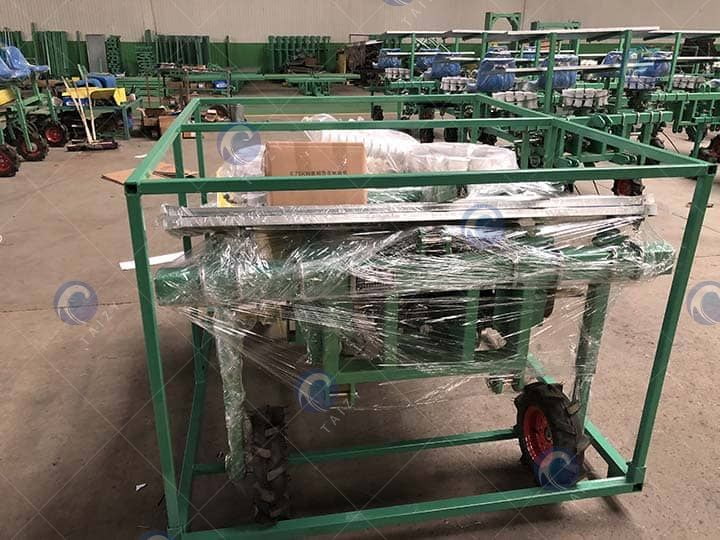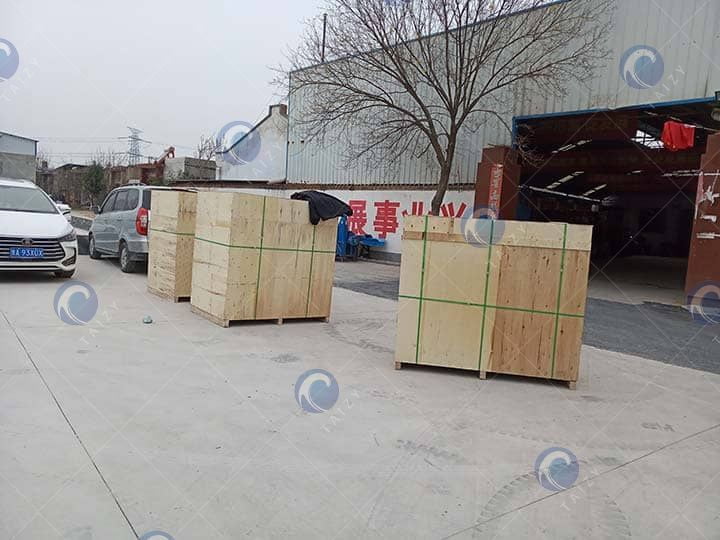Vegetable transplanter sold to America
Nowadays, vegetable transplanters are the machines that most farmers need to grow crops. With the continuous development of agricultural technology, it has become a common phenomenon that agricultural planting requires machines.
For example, most fruits and vegetables are now grown in greenhouses. And because the nursery seedling machine has the characteristics of high efficiency and high seedling survival rate. Therefore, the use of nursery planting machines has also become a must for greenhouse farmers. Subsequent mature seedlings require a larger living space. Therefore, we should transplant the seedlings into the field.
And if you want to get the job done efficiently, using a transplanter is a good choice. Vegetable transplanters are available in various styles. So, people can choose the transplanter that suits their needs. In recent years, our transplanters have been sold to many foreign countries and received their support and love.
What is the process for customer to purchase vegetable transplanter?
The client is from the United States and he is Tanzanian. He lived in the United States for 17 years. He grows 700 acres of onions and 200 acres of tomatoes, rice, millet, and corn. In order to improve production efficiency and save labor costs. He wants to buy tomato transplanters and onion seedling machines from us.
After a full understanding of the customer’s needs. We recommend the four-row trailed tomato transplanter and the 6-row self-propelled onion transplanter to our customers. In addition to this, he also needs a rice transplanter and a corn harvester.
Because there are many points to confirm, our entire communication process is long. Especially regarding row spacing and plant spacing. We need to customize the machine according to the actual situation of customers.
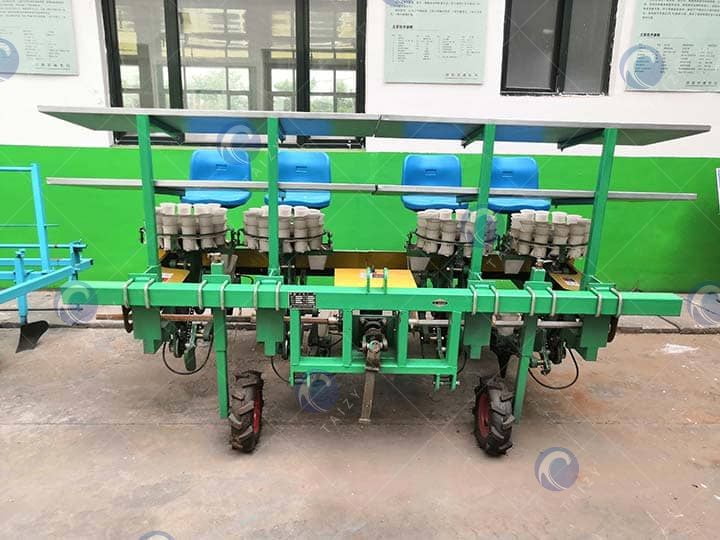
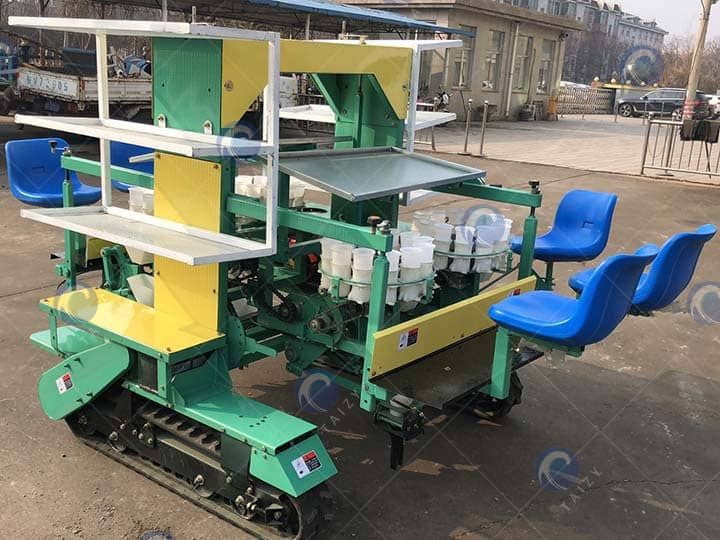
Working principle of self propelled vegetable transplanter
Manually put the seedlings into the feeding cups one by one. And then driven by the conveying mechanism, the seedling feeding cup moves to the seedling-throwing position. Next, the valve at the bottom of the seedling cup is opened under the action of the control mechanism. And the seedlings fall into the seedling feeding port of the seedling guide tube. The seedlings do free fall in the seedling guide tube. And finally, seedlings fall into the opened seedling ditch.
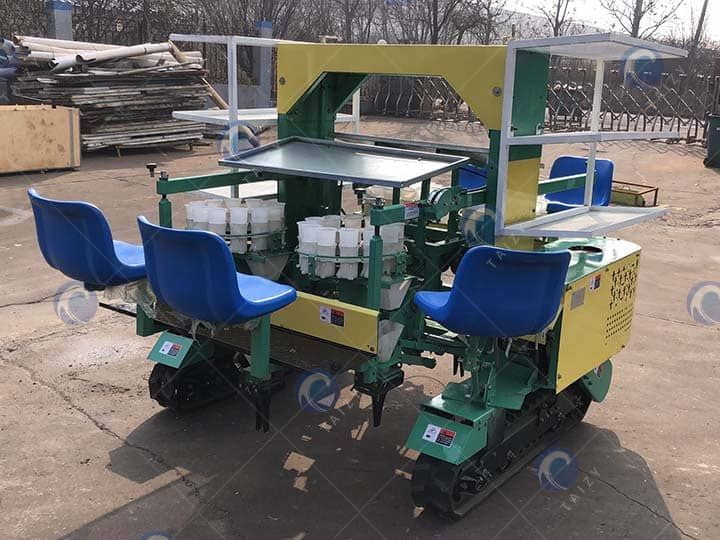
What is the working flow of the handheld vegetable transplanter?
1. First, the staff sits on the machine seat. Then turn on the machine.
2. The farmer puts the seedlings in the seedling tray into the seedling cup.
3. Then the transplanting device drops the seedlings into the seedling ditch.
4. During the whole process, farmers keep repeating the action of putting seedlings. And the machine keeps going at the same time.
Technical Specifications of the tomato transplanter
| Model | 2ZBLZ-6 |
| Weight (kg) | 1050 |
| Structure | self-propelled crawler |
| Planting tool | the duck mouth hanging cup |
| Plant space(cm) | 8-20 |
| Row space (cm) | 15-20 |
| Height of seedling (cm) | 10-20 |
| Rows | 6 |
| Operator | 4 |
| Power(kw) | 7.5 |
| Model | 2ZBX |
| Plant spacing (cm) | 20-50 |
| Row spacing (cm) | 25-50 |
| Row | 4 |
| Tractor (Hp) | >=50 |
| Capacity(㎡/h) | 2664 |
Why use a seed transplanter equipment?
1. Mechanical transplanting can better ensure plant spacing and row spacing. And the depth is consistent, thereby improving the quality and yield of the crop.
2. There is less contact between seedlings and institutions. So it is not easy to damage the seedlings.
3. The adaptability of the machine is wide. Can transplant a variety of vegetables, fruits and plants.
4. The machine has high working efficiency. So, farmers can saves a lot of time and effort.
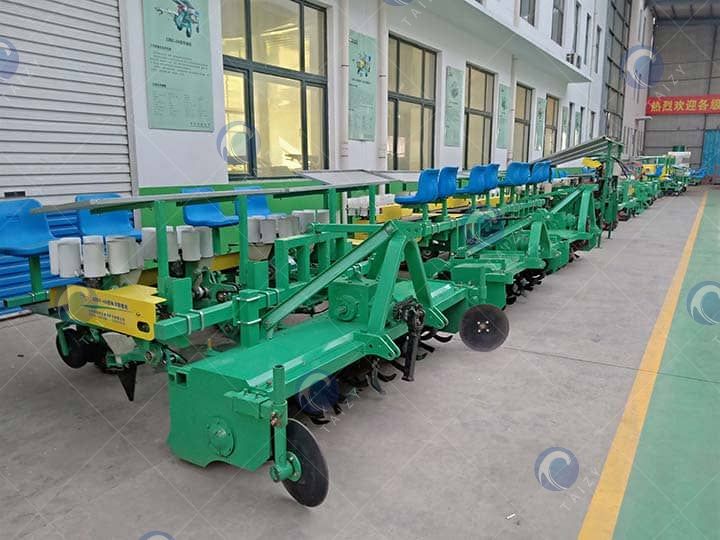
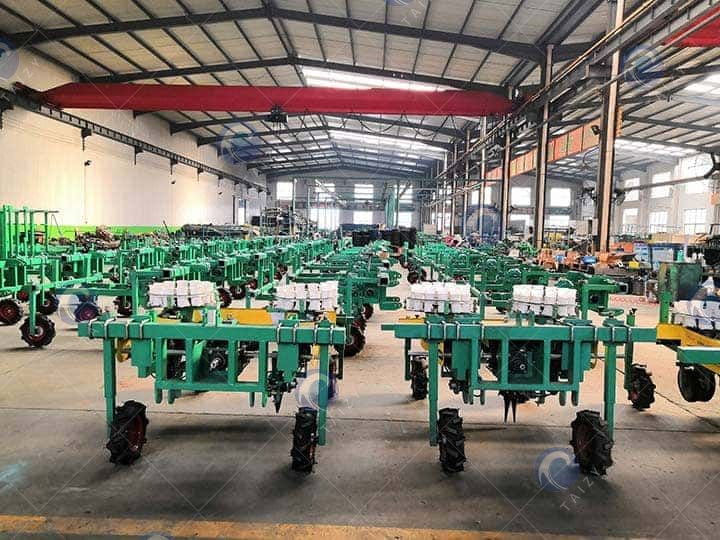
FAQ
1. What is the power of the machine??
The self-propelled power is a gasoline engine. The crawler type is a large gasoline engine or diesel engine. Trailed transplanters are driven by the tractor PTO.
2. Are row spacing and plant spacing fixed?
The plant spacing can be adjusted within a certain range. Line spacing needs to be customized.
3. Can the machine add other functions besides transplanting?
Can. Other additional functions are fertilization, ridge, rotary tillage, watering, mulching, transplanting, and laying drip irrigation tape.
4. Can the machine be customized?
Yes, sure. We will customize relevant parts according to the specific needs of customers.
5. Can the machine work on ridges?
Yes. The machine can work on both flat and ridged fields.
